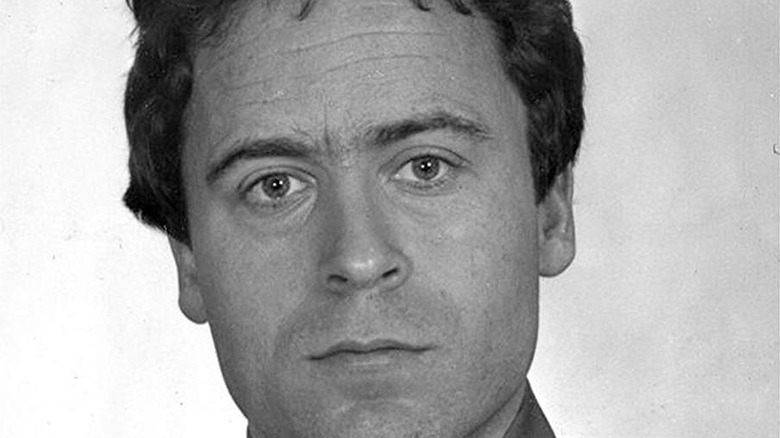Here's What Was Wrong With Ted Bundy According To A Psychologist
We've all heard the cliche "fake it 'til you make it." For some, it's a useful self-help mantra. But for notorious serial killer Ted Bundy, it was the attitude behind a string of heinous crimes and years of deceit. In the 1970s, Bundy killed at least 20 women and sexually abused many of them, per Biography.
The details of these crimes clearly show that Bundy was a heartless monster with a violent vendetta against women. But Bundy also had a paradoxical reputation as a charming ladies' man who curried favor among women he knew personally before his arrest.
Among the world's most notorious serial killers, Bundy has been puzzling largely for the disparity between his heinous actions and his charismatic public persona. But, as it turns out, this disparity may be the exact thing that offers insight into how and why he was able to commit and justify his crimes.
A psychological evaluation of Ted Bundy highlighted his dishonesty
Following Ted Bundy's 1975 arrest, prison psychologist Al Carlisle gave Bundy a 20-hour psychological evaluation to determine how dangerous he could be. Carlisle's 2017 book, "Violent Mind: The 1976 Psychological Assessment of Ted Bundy," detailed his findings. His examination included conversations with Bundy's ex-girlfriends.
According to Psychology Today, Carlisle noted that although Bundy was easy to talk to, he was hard to read. This was due to various factors of Bundy's behavior, such as his pathological lying and his constantly changing personality. He also gathered, from his own observations and those of Bundy's fellow inmates, that Bundy used his charisma, intelligence, and apparent warmth as a deceitful mask to hide his dark side and lack of genuine compassion for his victims and others.
Carlisle's initial conclusion was that Bundy should be sent to a medium-security prison. But Bundy was later moved to a maximum-security prison — including time spent in solitary confinement, per Ann Rule's "The Stranger Beside Me" — due to mounting concerns about potential escape attempts.
Ted Bundy presented an alternative identity as a defense
Following his evaluation of Ted Bundy, Dr. Carlisle used his findings to understand how sadistic serial killers can present themselves socially as normal. This understanding was built on three psychological processes: fantasy, dissociation, and compartmentalization.
Psychology Today describes the fantasy process as imagining scenarios that would be entertaining or comforting. According to Carlisle, Bundy had been an awkward outsider in his childhood, which was a major factor in his use of sadistic fantasies and a false persona to self-soothe. Reading true crime and porn fueled his fantasies of rape and murder, which gradually intensified as they played out in his mind over and over as the years went by.
Dissociation, or detaching oneself from unpleasant feelings or memories, and compartmentalization, or placing one's different thoughts and actions into separate categories, also likely played roles in Bundy's ability to create a charming persona despite his awkward childhood and gruesome crimes. "Compartmentalization is a process that all of us can engage in to one degree or another," Carlisle told Psychology Today. "It's a complex state of mind on a continuum that can vary from a healthy level, such as with an actor who rehearses a script so intently that when portraying that role on stage or in a film he has a deep sense of being that person. At the other end of the continuum is a very destructive process that can result in violence."


